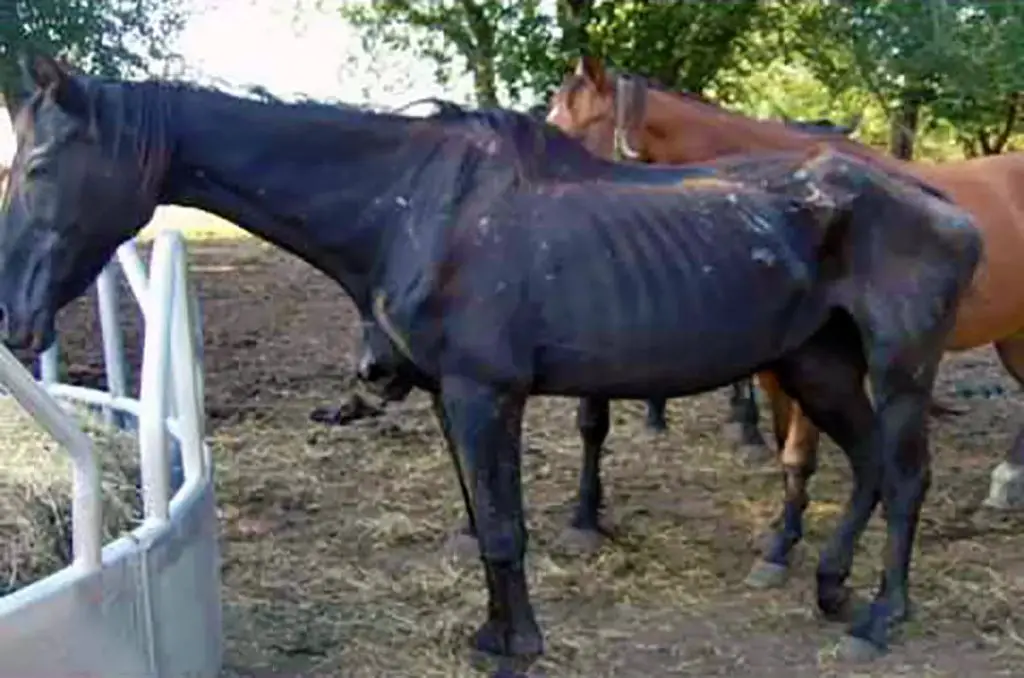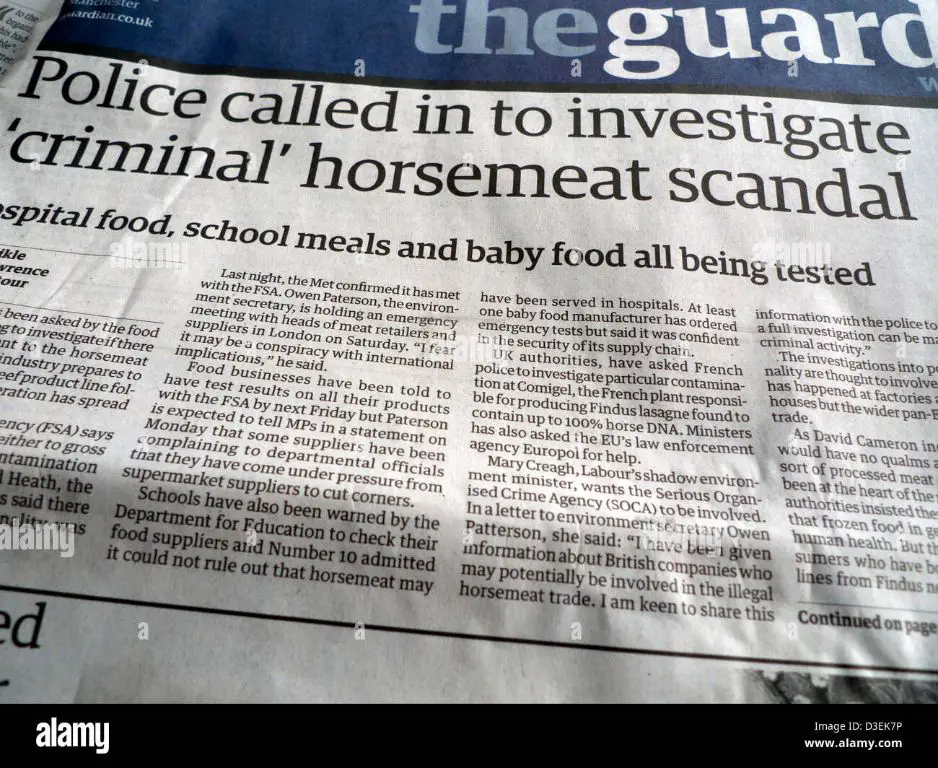Introduction
Horse meat was a common ingredient in dog food for much of the 20th century. In fact, horse meat made up 25-35% of many dog foods in the 1950s and 1960s. At the peak of its usage, over 200,000 horses were slaughtered annually for pet food in the United States. However, objections from pet owners eventually led most brands to remove horse meat from their formulas by the 1990s. Today, some lingering usage continues overseas, but it is now rare to find it in dog food sold domestically.
Early History of Dog Food
The origins of commercial dog food date back to the late 1800s. As urban populations grew, demand emerged for more convenient pet food products. This led to the creation of the first mass-produced dog food by a company called Spratt’s in England in 1860. Spratt’s produced a biscuit-style dog food made from wheat, vegetables, beetroot and beef blood. During the early years, dog food consisted primarily of offcuts and scraps from butchers or bakeries. Dog biscuits were also commonly made at home from inexpensive ingredients.
In the United States, commercial dog food production took off in the early 20th century. Companies like Ken-L Ration and Chappel Brothers emerged as popular early brands. Canned horse meat was a common ingredient in early American dog foods. The increased affordability of automobiles helped drive the expansion of commercial pet food, as motorized deliveries enabled wider distribution. Through the first half of the 1900s, most dog food consisted of canned wet food or dry biscuits. The variety of ingredients, protein sources, and production processes continued to evolve over time.

Horse Meat as an Ingredient
Horse meat became a common ingredient in many early commercial dog foods starting in the early 20th century. At the time, there were large numbers of horses used for transportation and labor. With the rise of motorized vehicles, the horse population declined dramatically, leaving a large surplus of horses that were retired or sent to slaughterhouses.
This abundant and inexpensive supply of horse meat proved an appealing protein source for the nascent pet food industry. Horse meat had more protein than other widely available meats like beef and was cheaper than dog food made with fresh meat. Many early dog food brands touted horse meat as a premium ingredient.
The strong, muscular nature of horses also gave the impression that horse meat provided dogs with vigorous nutrition. As commercial dog food expanded through the 1940s and 50s, brands featuring horse meat became popular sellers. For the next few decades, horse meat remained an economical, protein-rich component of most dry and canned dog foods.
Popularity Peaks Mid-20th Century
The use of horse meat in commercial dog food likely reached its peak in the United States during the 1940s and 1950s. During and after World War II, horse meat was cheap and plentiful, making it an attractive ingredient for pet food manufacturers. The tough leather industry also provided a ready source of horse byproducts that could be rendered down into meat and bone meal. Canned dog foods featuring horse meat were popular, touting it as a high-quality ingredient. The rise of suburban living and smaller homes also contributed, as canned food was more convenient than feeding table scraps.
By the 1950s, almost all the major dog food companies were offering canned foods featuring horse meat. Brands like Ken-L Ration, Gaines Burgers, and Calo cat food had become household names, in large part due to their horse meat ingredients. The pet food market boomed during this era, aided by savvy advertising campaigns and Americans’ expanding disposable incomes. The peak years of horse meat usage likely occurred between 1945 and 1960, before growing controversy over the practice started impacting its popularity.
Decline Begins
By the 1970s, the use of horse meat in pet food started to decline for a few key reasons. First, the supply of horse meat became less reliable as the horse population in the U.S. fell. With fewer horses being bred for work as cars and machinery replaced them, there simply weren’t as many horses being slaughtered for meat.

Secondly, the stigma around horse meat grew, even as other meats like beef and chicken remained popular. Horses became seen more as companions and pets rather than livestock. People increasingly felt uncomfortable with the idea of eating or feeding horse meat to their dogs.
Finally, major pet food companies began actively moving away from horse meat ingredients. They introduced alternative proteins like chicken, lamb, and fish, while proactively advertising their products as “horse-meat free.” This shift was in response to declining consumer demand and preferences.
Alternatives Emerge
As concerns grew over the health and sanitation risks of horse meat, pet food manufacturers began exploring alternative protein sources like chicken, beef and fish. Companies found they could reliably source quality ingredients like chicken meal and meat by-products from poultry and cattle farms. Fish protein also became more viable as commercial fishing expanded. These alternatives were generally cheaper than horse meat and lacked the stigma.
Chicken and poultry ingredients surged in popularity starting in the 1960s and 70s. Companies highlighted their “All-Chicken” or “Made with Real Chicken” recipes. Beef and meat by-products also grew as large cattle operations provided a steady supply. Fish saw increased usage, especially as pet owners looked for non-red meat options. The availability, affordability and appeal of these alternatives enabled dog food companies to steadily reduce and ultimately eliminate horse meat.
Horse Meat Gets Phased Out
By the 1970s, the use of horse meat in commercial dog food began to decline rapidly. Several factors contributed to this shift away from horse meat as a major ingredient:
– Concerns over the safety and nutritional value of horse meat emerged as more research was conducted. Dog owners began to view horse meat as an inferior meat source compared to other options like beef or chicken.
– The supply of horse meat became more expensive and unreliable over time. Fewer horses were being slaughtered in the U.S., making it harder for dog food companies to source consistent supplies of horse meat.
– Public perception towards horses began to change, viewing them more as pets and companions rather than livestock. This made the idea of feeding horse meat to dogs unpalatable for many consumers.
– Newextrusion and processing methods allowed dog food companies to utilize alternative meat and protein sources, like poultry and fish meals, as cheaper substitutes for horse meat.
– As major dog food brands moved away from horse meat recipes, public expectation changed to prefer dog foods without horse meat. By the 1980s, virtually all major commercial dog food companies in the U.S. had eliminated horse meat from their products and ingredients.

Lingering Usage Overseas
While major dog food companies in the United States and United Kingdom moved away from horse meat in the 1980s, some international brands continued limited usage beyond this point. In parts of Europe where eating horse meat is more culturally accepted, a handful of dog food products contained small amounts of horse meat into the 1990s and even 2000s.
These lingering horse meat recipes were mostly sold in countries like France, Switzerland, and Sweden. However, the quantities used were minimal, with horse meat constituting 5% or less of the total meat content in most cases. Additionally, these brands were smaller niche players rather than the major multinational companies that dominate the global dog food industry.
By the 2000s, as cultural perceptions around horses evolved in Europe, most companies phased out horse meat entirely. But its inclusion in some recipes into the 1990s and 2000s reflects differing cultural norms around the world when it comes to horses as livestock and sources of meat.
Horse Meat Scandals in the 2000s
In the early 2000s, there were several food scandals in Europe involving the undisclosed addition of horse meat to products labeled as 100% beef. This started in 2003 when a Dutch meat wholesaler called Van Duijn was found to be mixing horse, pork, and beef and selling it as pure beef. Further investigations found that Van Duijn had supplied this mislabeled meat to many major food producers in Europe.
One of the most high-profile incidents came in 2013, when testing revealed that certain beef products sold in supermarkets across Europe contained undeclared horse meat. This included frozen burgers and ready meals sold under popular brand names like Findus and Tesco. It was a major scandal that undermined consumer trust.

The horse meat had originally come from suppliers in Romania before being processed in France and other countries. It remains unclear if there was intentional fraud or simply an issue of contaminated supply chains. However, the scandal prompted improved testing standards and tighter regulations around meat sourcing in Europe.
While the motivation was likely just to cut costs by substituting cheaper horse meat for beef, the lack of transparency outraged consumers. The episode demonstrated that horse meat was still making its way into the human food chain, albeit by stealth rather than as an declared ingredient.
Conclusion
By the late 20th century, the use of horse meat in commercial dog food had declined significantly, especially in the United States. While historically common, tighter regulations, concerns over safety, increased global trade in meat products, and the availability of alternative proteins gradually led to the phase out of horse meat from most dog food. Though some overseas manufacturers continued to use it in limited quantities, major scandals in Europe in the 2000s dealt a further blow.
Today, the use of horse meat has become quite rare, though not fully eliminated, in commercial dog food production. Consumers and manufacturers have instead turned to other meat, plant and synthetic sources to meet canine nutritional needs. For most dog owners, checking the label for horse meat ingredients is no longer a major concern as it was in decades past. The evolution away from horse meat has accompanied wider changes in the dog food industry and perceptions around pet diets. However, horses do still sometimes end up in pet food in certain parts of the world, requiring continued vigilance.
The key takeaways are:
- Horse meat was once a popular ingredient in dog food, peaking in use in the mid-20th century.
- Safety issues, regulations, meat industry changes and new alternatives led to a decline in usage starting in the late 1900s.
- Major scandals in the 2000s sped up the phase-out, but some international manufacturers still use it in small amounts.
- Today horse meat has become a rarity in commercial dog food, though oversight is still needed.